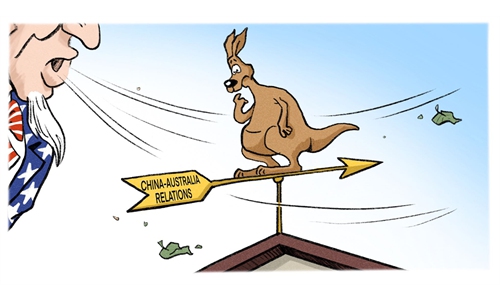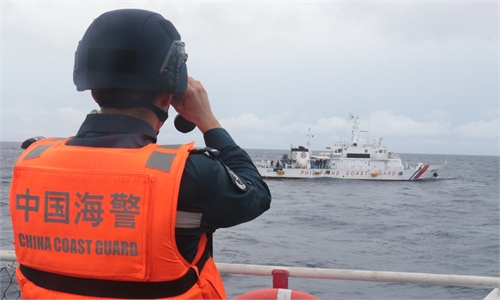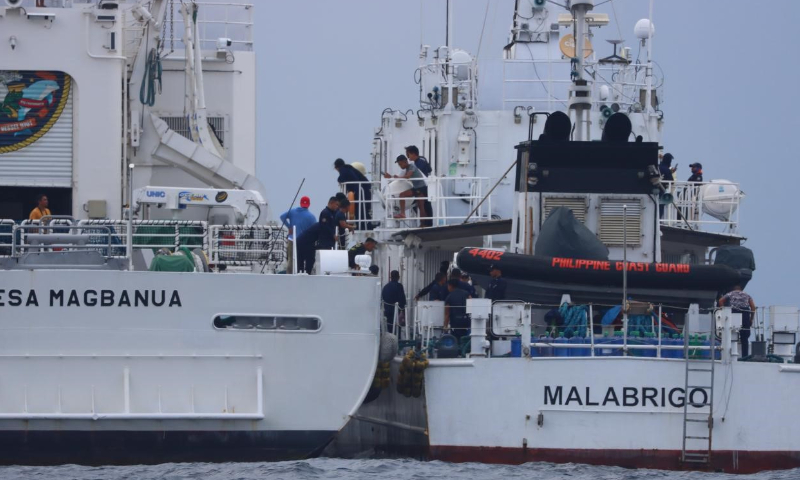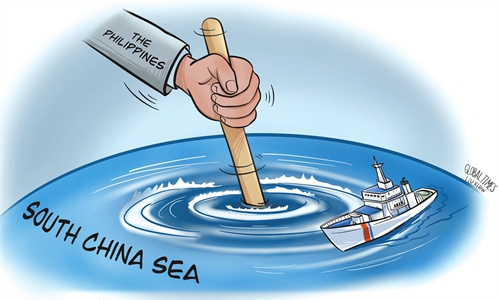Illustration: Chen Xia/Global Times
Former US president Donald Trump was once again the target of an assassination attempt, marking the second such incident in two months.
How many more bullets are aimed at American political figures? This event has thrust the issue of escalating political violence in the US into the spotlight.
Politicians have resumed their customary performances in Washington: condemning violence and calling for unity. Yet, behind these lofty words lies a political system spiraling out of control, a beacon slowly dimming.
American media and analysts have offered various explanations: increasing social inequality, political polarization, the spread of fake news, and rampant gun ownership.
Some even provide historical context, suggesting that the political violence has always been part of American politics.
The evolution of America's democratic system to its current state is linked to early defects in this machine. However, it has self-repair capabilities, and the current problem is that this ability is weakening.
It can no longer keep pace with the global progress and development of democracy, nor can it adapt to the political and social developments within the US.
The flaws of this dual-party rivalry are becoming increasingly apparent over time.
The American electoral system is gradually becoming a money game. Whoever has the financial resources can manipulate election outcomes. Corporations and wealthy individuals easily influence policy directions through political donations.
In this process, the voices of ordinary citizens are feeling completely marginalized. This money-driven politics exacerbates social inequality and erodes public confidence in the political system.
The two-party system has devolved into a disingenuous performance. The Republicans and Democrats appear to be at odds, but in reality, they are engaged in a back-and-forth power play.
Their conflicts are not about solving problems but about winning elections. In this process, the true spirit of democracy is cast aside, ultimately deepening societal division and polarization.
Social media in the US has become a tool for spreading lies and hatred. In such an information environment, it is difficult for the public to make rational judgments, and extreme ideologies and conspiracy theories flourish.
The American judicial system has also been politicized. Supreme Court justices are no longer neutral arbiters but have become representatives of party interests. The law is no longer a symbol of justice but a weapon in political struggles. Critically, this machine can no longer solve these problems and instead becomes a creator of issues.
Even the shrewdest politicians cannot discern whether it is societal polarization that has caused party polarization or vice versa.
This touches upon a more fundamental problem: it is the system itself that perpetuates political violence. In other words, the machine's operating system is flawed, not just a few parts or components. It either produces defective outcomes or damages itself in the process.
Washington's politicians seem aware of the severity of the problem but are powerless. They continue to exploit the system for their political gain, attempting to divert attention by creating new adversaries.
America needs a political reform. It needs to redefine what true democracy is and establish a political system that genuinely represents the interests of all people. This inclusivity is crucial for rebuilding the public's confidence in politics.
Meanwhile, Washington's political elites should be careful in using the term "democracy" on the international stage, as it may further remind people to pay greater attention to the challenge they are facing domestically, and damage their reputation.
The bullets are flying, and the potential consequences are grave. Who will they ultimately hit? Let us wait and see.
Withdrawal of BRP 9701 shall be a beginning of changing course by the Philippines
On August 26, 2024, an officer from China Coast Guard monitors Philippine Coast Guard ship 4411 which ilegally intruded into waters near C...










